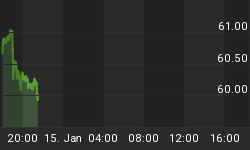7/6/2011 12:01:50 AM
Stocks took a breather with a mixed clothes but a tight trading range...
Recommendation:
Take no action.
Click here to access our stock market chat rooms today! For a limited time, try our chat room for free. No subscription necessary to give it a try.
Stock Market Trends:

- ETF Positions indicated as Green are Long ETF positions and those indicated as Red are short positions.
- The State of the stock market is used to determine how you should trade. A trending market can ignore support and resistance levels and maintain its direction longer than most traders think it will.
- The BIAS is used to determine how aggressive or defensive you should be with an ETF position. If the BIAS is Bullish but the stock market is in a Trading state, you might enter a short trade to take advantage of a reversal off of resistance. The BIAS tells you to exit that ETF trade on "weaker" signals than you might otherwise trade on as the stock market is predisposed to move in the direction of BIAS.
- At Risk is generally neutral represented by "-". When it is "Bullish" or "Bearish" it warns of a potential change in the BIAS.
- The Moving Averages are noted as they are important signposts used by the Chartists community in determining the relative health of the markets.
Best ETFs to buy now (current positions):
Long DIA at $125.90
Long SPY at $134.43
Long QQQ at $58.20
Click here to learn more about my services and for our ETF Trend Trading.
Value Portfolio:
We are long TBT at $32.50 from June 16th. (TBT closed at $34.45 on July 5th)
We sold short one contract TLT July $98 Calls at $1.19 per share on June 16th
We sold short one contract TLT Aug $98 Calls at $1.80 per share on June 16th
We sold short one contract TLT Sep $98 Calls at $2.13 per share on June 16th
(TLT closed at $93.84 so the contracts we sold are more than four dollars out of the money with price potentially reversing higher. Time value on all option contracts we sold continues to erode which means we can buy them back for less than we sold them for or, if price stays below $98.00, let them expire worthless and keep all the money).
Daily Trading Action
The major index ETFs opened mixed but fairly close to flat. The Dow and the S&P-500 opened mildly lower which is where they finished after trading in a tight range through the day. The NASDAQ-100 opened mildly higher but finished one half of one percent higher on the day. The Semiconductor Index (SOX 414.94 -4.17) fell one percent. It moved down to test its 200-Day Moving Average (DMA) and bounced closing a bit above that important support level. The Russell-2000 (IWM 84.04 +0.21) closed about a quarter of one percent higher after accounting for the fifteen cent dividend. The Regional Bank Index (KRE 25.62 -0.24) lost most of one percent but managed to stay above all moving averages we regularly report on. The Bank Index (KBE 24.17 -0.27) lost a bit more than one percent and fell back below its 50-DMA. The Finance Sector ETF (XLF 15.49 -0.14) fell most of one percent falling back just below its 50-DMA. All equity indexes we regularly monitor are now in trading states and all have a BEARISH BIAS but are positioned to potentially reverse that this month. Long term bonds (TLT 93.84 +0.21) made a modest rebound. TLT is in a downtrend state but has a BULLISH BIAS. NYSE trading volume was light with 907M shares traded. NASDAQ share volume was light with 1.537B shares traded.
There was a single economic report of interest released:
- Factory Orders (May) rose +0.8% versus an expected +1.0%
That report was released at 10:00am and the April report was adjusted down to -1.2% which would have reduced expectations so the report came out as something of a draw versus expectations.
The U.S. dollar rose four tenths of one percent.
The yield for the 10-year note fell six basis points to close at 3.14. The price of the near term futures contract for a barrel of oil rose $1.95 to close at $96.89.
Implied volatility for the S&P-500 (VIX 16.06 +0.19) rose one percent and the implied volatility for the NASDAQ-100 (VXN 17.76 +0.39) rose two percent. This was somewhat expected. The question remains whether this will lead to another leg lower.
Energy (+0.5%), Consumer Discretionary (+0.4%), Tech (+0.2%), and Materials (+0.1%) moved higher while the other six economic sectors in the S&P-500 moved lower led by Financials (-0.8%). It is interesting that the three "safest" sectors (Consumer Staples, Utilities, and Healthcare) moved lower while the "risk on" sectors moved higher.
Market internals were mixed with advancers leading decliners by very slim margins on both the NYSE and the NASDAQ. Down volume led up volume 3:2 on the NYSE and by a narrow margin on the NASDAQ. The index put/call ratio rose +0.59 to close at 1.68. The equity put/call ratio rose +0.08 to close at 0.64.
Commentary:
Tuesday followed the torrid rise of last week with a dull trading day with the Dow and S&P-500 logging losses that were less than one tenth of one percent but the "risk on" trade still apparently on. Implied volatility rose again by a modest amount but insurance by professional investors via index put options was laid on thick. While the longer term bonds and the U.S. dollar both bounced, as we anticipated, equities weren't punished much yet.
We are looking for perhaps one more relatively weak day before the major indexes make another leg higher. While we don't expect a move similar to last week, we do believe the major indexes will finish the week higher than they did last week.
We hope you have enjoyed this edition of the McMillan portfolio. You may send comments to mark@stockbarometer.com.
















